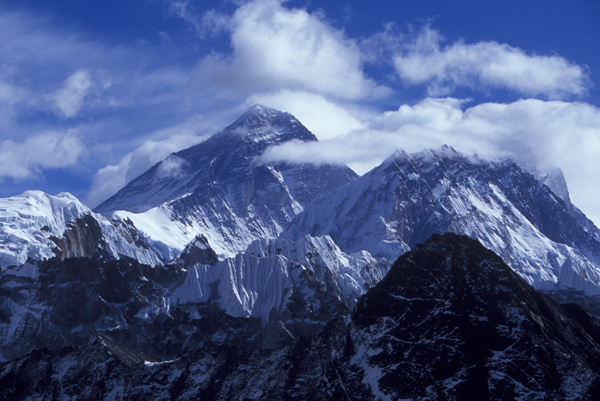Today in 2005, test pilot Didier Delsalle took a helicopter where a helicopter had never gone before: the summit of Mount Everest.
There had been talk for decades about a helicopter visit to the top of the world’s tallest mountain.
But helicopters generally don’t spend a lot of time at high altitude.
Helicopter rotors essentially allow the craft to float in the air, but that requires air.
When you’re up that high, there’s just not a lot of air on which to float.
The highest flight on Everest to that point came in 1996.
A military pilot from Nepal, Colonel Madan “K.C.” Khatri Chhetri, made a series of successful flights onto the mountain.
But those weren’t to the summit, and they were made to rescue climbers who were in such bad shape and such urgent need of medical care that the authorities essentially threw caution to the wind.
Oh, and speaking of wind, it’s extremely windy up high in the Himalayas!
But by the mid-2000s Didier Delsalle was convinced that technology had improved enough that he could probably take a helicopter all the way to the summit.
He spent about a year making test flights into high altitude and working on getting permission from Nepal’s government to make the attempt.
In April 2005, Delsalle’s team had flew the helicopter in parts to Kathmandu, where they reassembled it.
A sandstorm badly damaged the hangar they were using, but fortunately the helicopter itself was OK.
When the team got to Everest, Delsalle ended up flying a rescue mission of his own to aid two trekkers, but then at last he was able to make his own bid for the summit.
To give himself as much leeway as possible, he’d cleared as much weight out of the copter as he could, pulling out the passenger seats and even going on a diet himself!
He said the hardest part of the flight was the summit landing; he was so high up and there was so little to land on that he couldn’t really see the top of the mountain.
He touched down for just shy of four minutes – it had to be at least a two minute landing to count – and then he was back on his way down.
Delsalle made the flight again the next day, partly to prove it was repeatable and partly because it looked at the time as if his data recorder hadn’t tracked the first flight.
The tracker actually had worked fine, plus there was video of the entire trip which, as you can see above, defies description.
Climbing Mount Everest can be very dangerous, especially for the Sherpas who make multiple trips to haul supplies and climbing equipment up and down the mountain.
Outside Magazine reported on some recent test flights of cargo drones – the idea is that the drones can fly all the gear over the treacherous Khumbu Icefall and leave the climbers to, y’know, climb.
Landing on Everest: Didier Delsalle Recalls his Record Flight (Vertical Magazine)
Could Flying Drones Save Lives on Mount Everest? (Outside)

